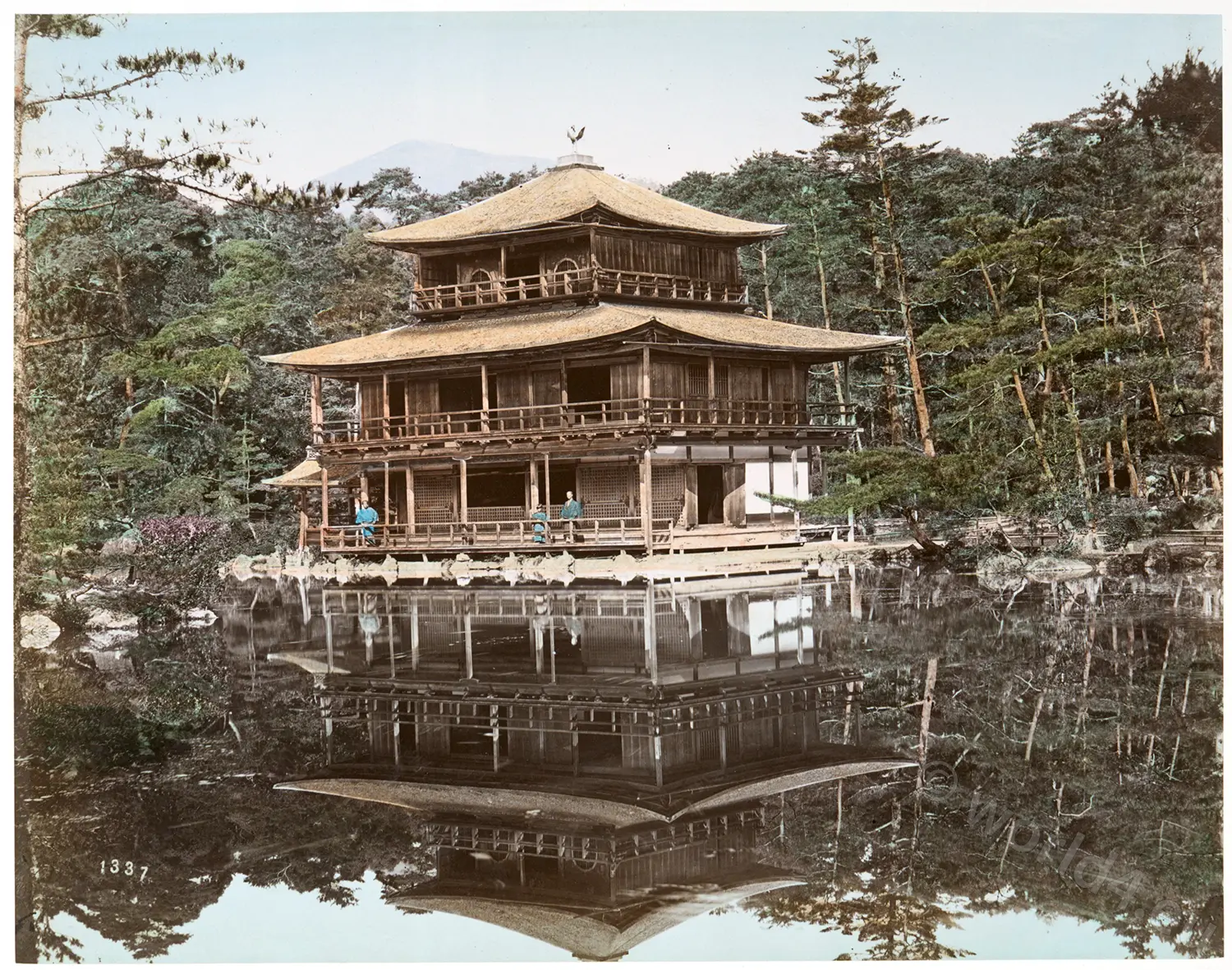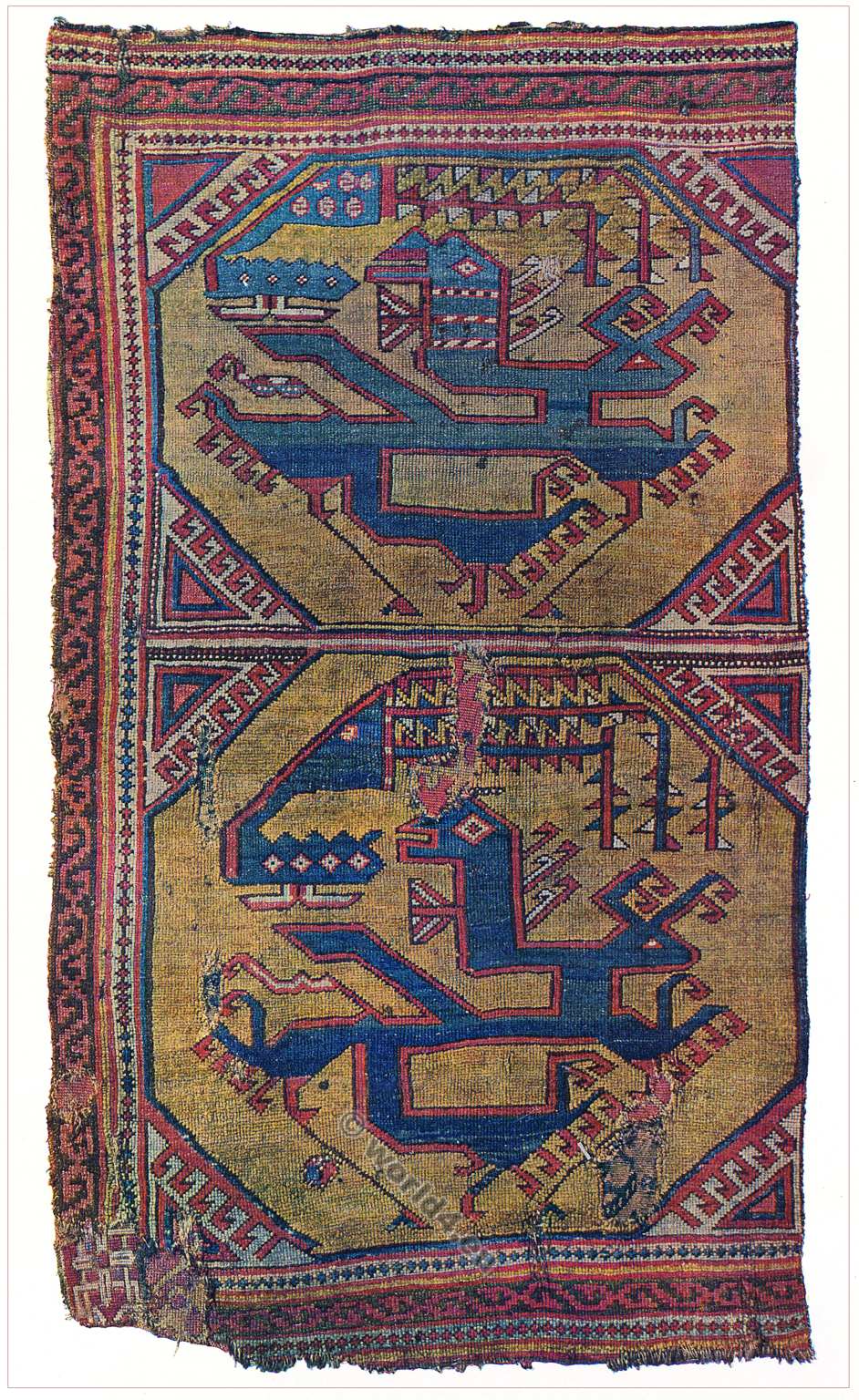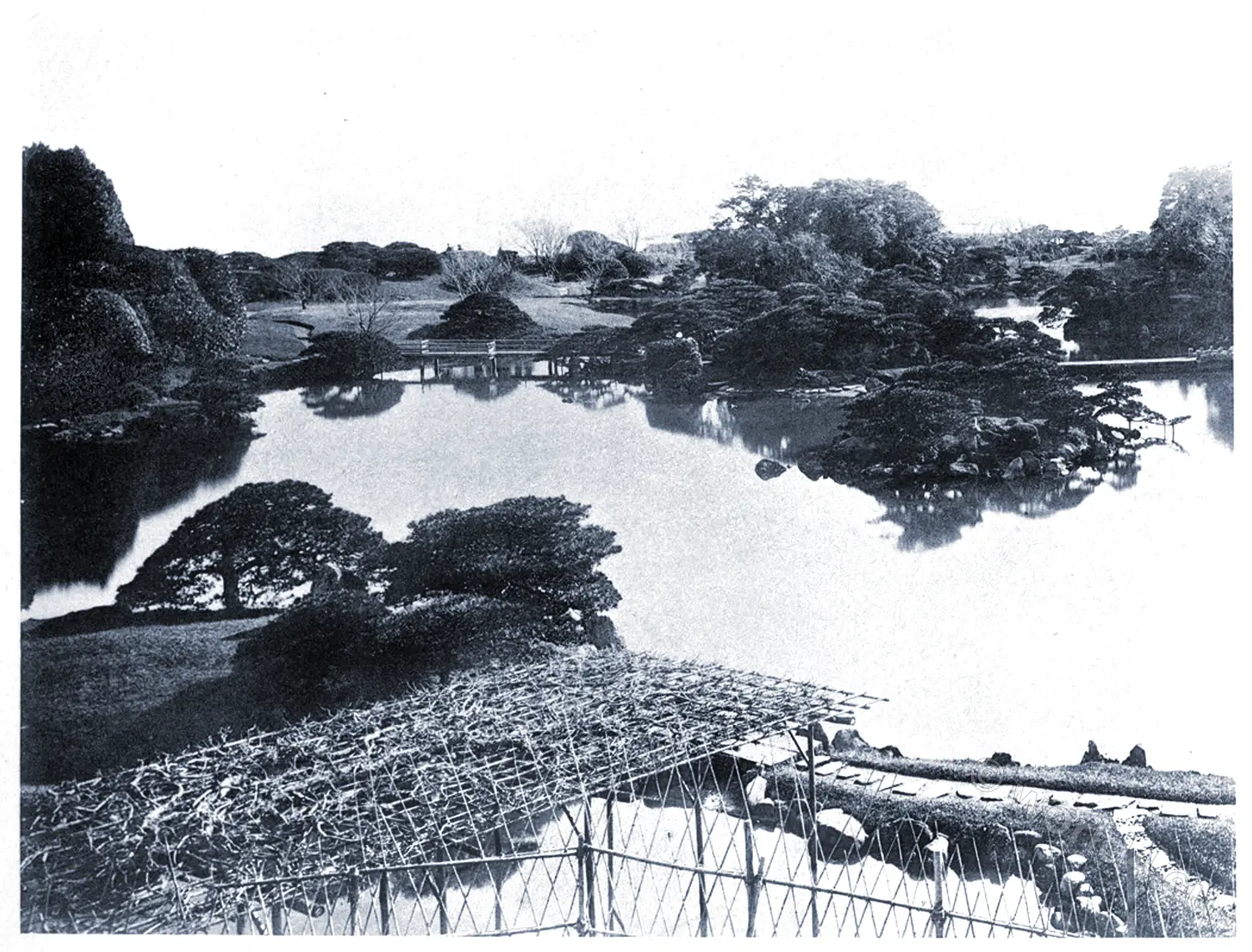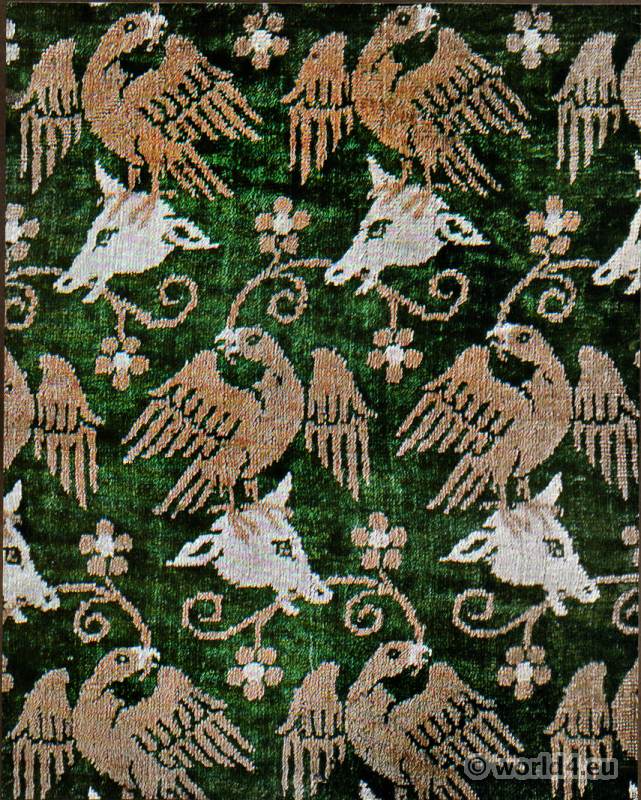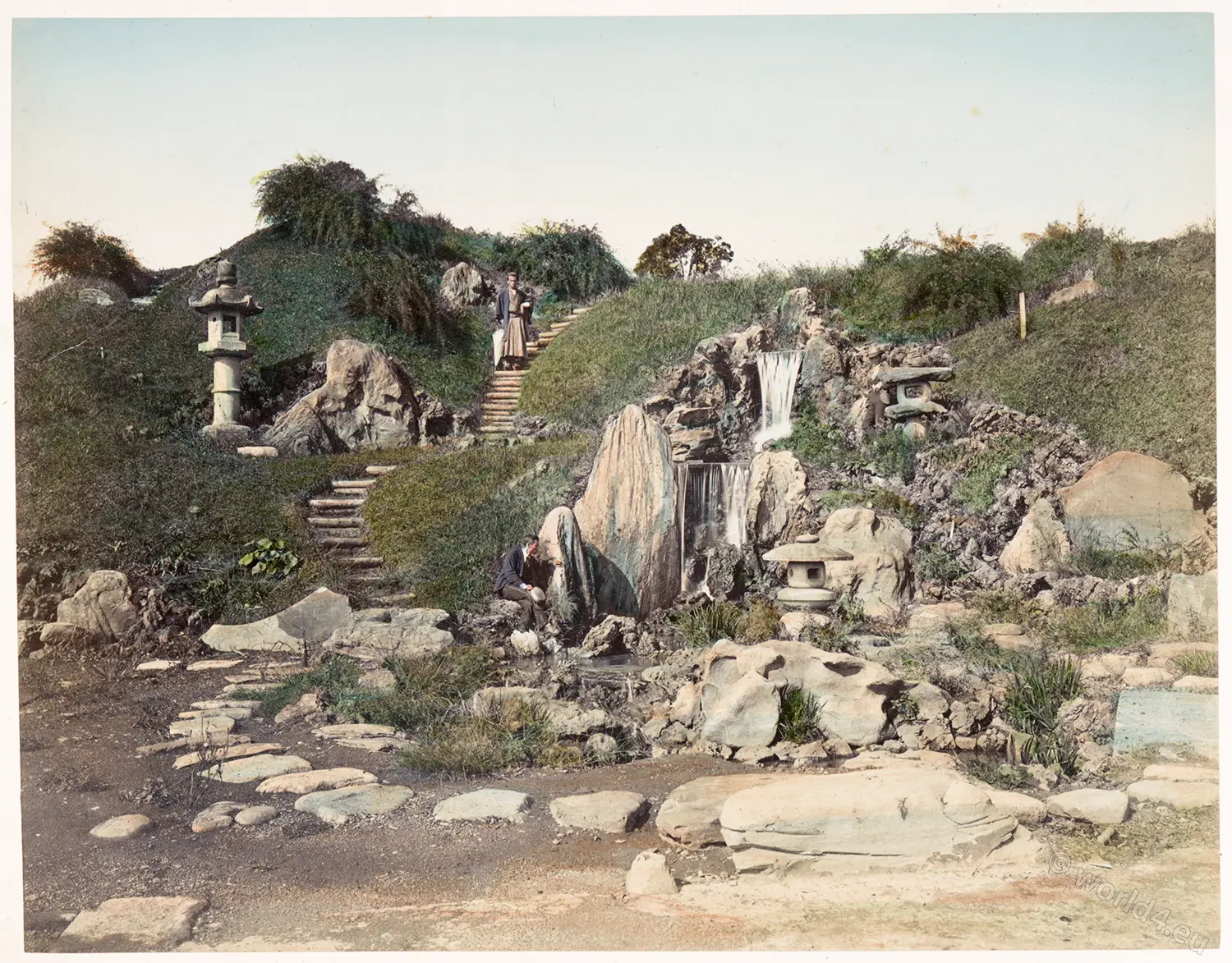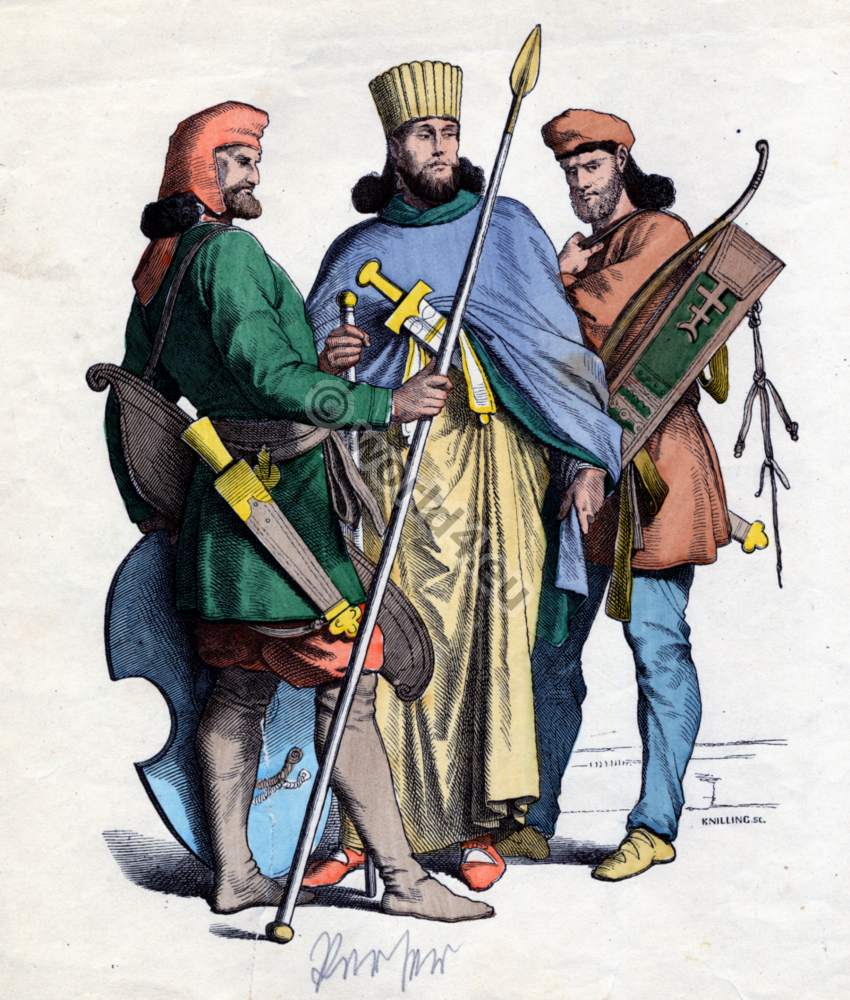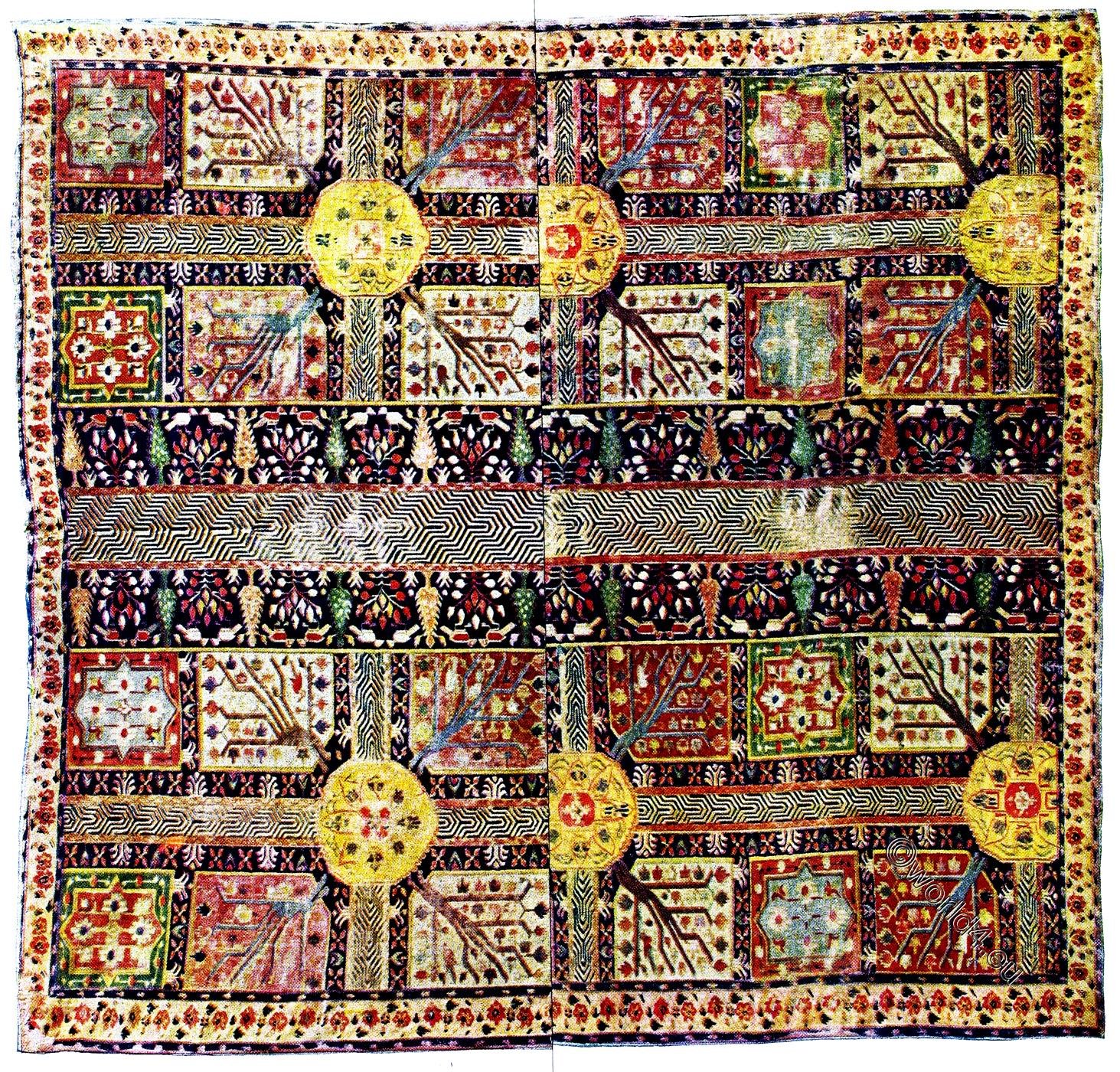
A 16th CENTURY PERSIAN ROYAL “GARDEN” CARPET. (Reputed to have been made for Shah Abbas the Great for Sefavi Palace.) Date 1587-1628
For Chosroes I., Sassanian King of Persia (A.D. 531-579) there was made a wonderful carpet, 450 feet long by 90 feet wide.
It was called “Chosroe’s Spring,” and was employed to decorate a hall in the palace at Ctesiphon. In the year 637 Ctesiphon was captured by the Arabs, and all its contents became their prey. Nothing astonished them more than this wonderful carpet, and several descriptions of it have been preserved in the writings of Tabari and other Arab chroniclers. From them we learn that the design of the carpet was the plan of a royal pleasure garden or paradise. It represented beds of spring flowers and blossoming trees, divided by paths and water flowing in channels. There was a broad border all around, and here again were beds of bright-coloured flowers. The yellow ground in this wonderful piece was of gold thread. The leaves of trees and flowers were of silk. Fruits were inlaid with polished stones, the waters were crystals, the blossoms were precious stones.
This working of gems and other polished stones into a textile fabric finds a distant echo in the custom still followed in Persia and India of introducing bits of glittering talc into the patterns of embroideries. Perhaps originally the idea may have come from mosaic pavements which in Roman days may have affected carpet-design. The mosaic influence must have been even stronger in the carpet on which the Khalif Motawakkel was murdered in the year 861, for its border was adorned with circular medallions containing portraits.
Of course, no garden exists which has come down from Sassanian days, nor, so far as I know, is there a plan of one; but it is evident that the ancient tradition of garden design was carried down in Persia right through the middle ages and survived into the times of the Mughal Emperors of Delhi. Whether any such gardens exist in Persia I cannot say, never having visited that country, but I have seen them in Kashmir.
Such for instance are the Shalamar Bagh and the Nishat Bagh near the Dal Lake, both made by the Emperor Jahangir. The Shalamar Bagh is roughly oblong in form enclosed within a wall and occupying the slope of a hill. It measures about 500 by 230 yards. The Nishat Bagh measures about 600 by 250 yards. They are divided into terraces. A stream enters at the top of the garden and is conducted downwards in channels, and led into pools; both channels and pools are of rectangular form and framed with wrought stone. Sometimes the water pours down evenly over a large inclined bed of stone, the surface of which is deeply engraved with a design over which the water has to ripple so that the water itself takes the pattern from the stone and manifests it in glitter and movement. On the terraces there are pavilions and the open spaces are divided and formally planted with trees or shrubs. No doubt beds of flowers of regular shapes were likewise intended to find places The paths likewise are regular, and rectangularity is everywhere supreme.
If the ancient garden design, which was substantially devised at least as far back as the times of the Kingdom of Assyria, has thus steadily maintained itself down to our own day, it is not more surprising that carpets repeating this same garden design should likewise have continued to be made almost as long. We cannot, indeed, produce a mediaeval example, but a few still survive from the 17th to the 18th centuries, repetitions of a well-understood type which no doubt had been made generation after generation from the time of Chosroes down.
These garden carpets must not be confused with another type in which the formal element is absent. In this latter kind, of which the well-known carpet in the Poldi Museum at Milan is a good example, the field of the carpet is occupied by what may be called woodland. Here horsemen are hunting wild beasts, or tigers lurk under trees. The whole design is less orderly, or rather its orderliness is less or not at all geometrical. The best of these carpets that have survived are of 16th century date. Earlier versions of this type have perished, so that we cannot pursue backwards into the past the pedigree of the type. Whatever that pedigree may have been it was not the same as that of the formal type with which weare here concerned. That came down with strange persistence of arrangement from a remoter antiquity. Hence the peculiar interest which belongs to these formal garden carpets.
If we accept the canal as the characteristic feature of this type, the earliest accessible example is Dr. Figdor’s carpet, about 5 ft. by 4 ft., reproduced as figure 199 in Dr. Martin’s monumental work. This is of late 16th century date. It is of wool “with gold and silver thread and warp of silk.” As, however, it lacks the division into squares it cannot be satisfactorily grouped with the carpet under consideration. Closer to it comes the Wagner carpet (Martin, fig. 200), now somewhere in the United States. Kirman work, not before 1640, says Dr. Martin. It shows various kinds of trees growing besides garden canals.
By SIR MARTIN CONWAY.
Source: Exhibition of Persian art & curios: the collection formed by J.R. Preece, Esq., C.M.G., late H.B.M.’s Consul General at Ispahan, Persia by Vincent Robinson Galleries; Charles Lang Freer. London : The Vincent Robinson Galleries 1913.
Related
Discover more from World4 Costume Culture History
Subscribe to get the latest posts sent to your email.

